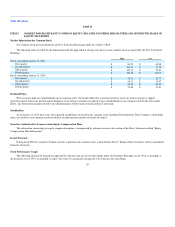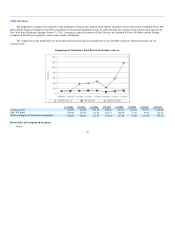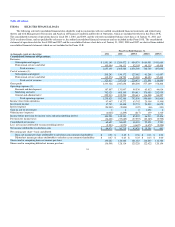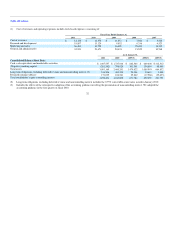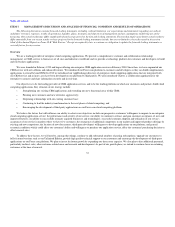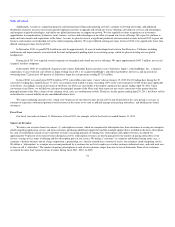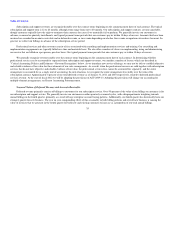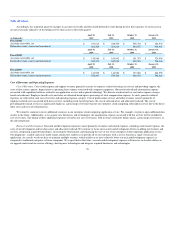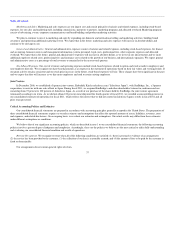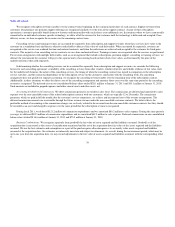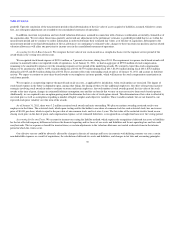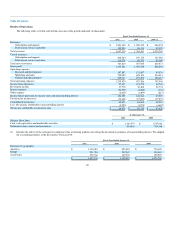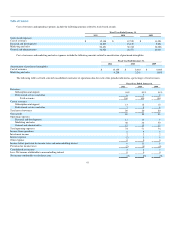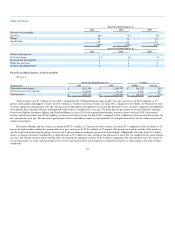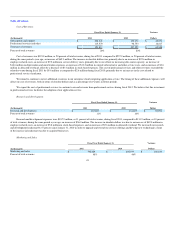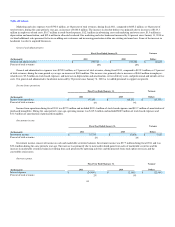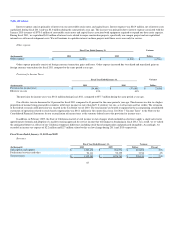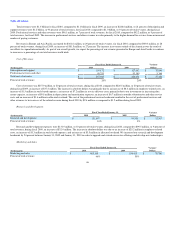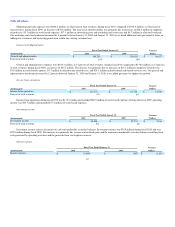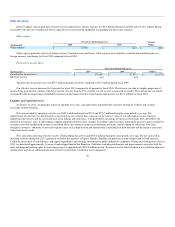Salesforce.com 2010 Annual Report Download - page 41
Download and view the complete annual report
Please find page 41 of the 2010 Salesforce.com annual report below. You can navigate through the pages in the report by either clicking on the pages listed below, or by using the keyword search tool below to find specific information within the annual report.
Table of Contents
We recognize subscription revenues ratably over the contract terms beginning on the commencement dates of each contract. Support revenues from
customers who purchase our premium support offerings are recognized similarly over the term of the support contract. As part of their subscription
agreements, customers generally benefit from new features and functionality with each release at no additional cost. In situations where we have contractually
committed to an individual customer specific technology, we defer all of the revenue for that customer until the technology is delivered and accepted. Once
delivery occurs, we then recognize the revenue over the remaining contract term.
Consulting services and training revenues are accounted for separately from subscription and support revenues when these services have value to the
customer on a standalone basis and there is objective and reliable evidence of fair value of each deliverable. When accounted for separately, revenues are
recognized as the services are rendered for time and material contracts, and when the milestones are achieved and accepted by the customer for fixed price
contracts. The majority of our consulting service contracts are on a time and material basis. Training revenues are recognized after the services are performed.
For revenue arrangements with multiple deliverables, such as an arrangement that includes subscription, premium support, consulting or training services, we
allocate the total amount the customer will pay to the separate units of accounting based on their relative fair values, as determined by the price of the
undelivered items when sold separately.
In determining whether the consulting services can be accounted for separately from subscription and support revenues, we consider the following
factors for each consulting agreement: availability of the consulting services from other vendors, whether objective and reliable evidence of fair value exists
for the undelivered elements, the nature of the consulting services, the timing of when the consulting contract was signed in comparison to the subscription
service start date, and the contractual dependence of the subscription service on the customer's satisfaction with the consulting work. If a consulting
arrangement does not qualify for separate accounting, we recognize the consulting revenue ratably over the remaining term of the subscription contract.
Additionally, in these situations we defer the direct costs of the consulting arrangement and amortize those costs over the same time period as the consulting
revenue is recognized. The deferred cost on our consolidated balance sheet totaled $28.1 million at January 31, 2011 and $19.1 million at January 31, 2010.
Such amounts are included in prepaid expenses and other current assets and other assets, net.
Accounting for Deferred Commissions. We defer commission payments to our direct sales force. The commissions are deferred and amortized to sales
expense over the non-cancelable terms of the related subscription contracts with our customers, which are typically 12 to 24 months. The commission
payments, which are paid in full the month after the customer's service commences, are a direct and incremental cost of the revenue arrangements. The
deferred commission amounts are recoverable through the future revenue streams under the non-cancelable customer contracts. We believe this is the
preferable method of accounting as the commission charges are so closely related to the revenue from the non-cancelable customer contracts that they should
be recorded as an asset and charged to expense over the same period that the subscription revenue is recognized.
During fiscal 2011, we deferred $121.2 million of commission expenditures and we amortized $80.2 million to sales expense. During the same period a
year ago, we deferred $82.3 million of commission expenditures and we amortized $63.9 million to sales expense. Deferred commissions on our consolidated
balance sheet totaled $116.6 million at January 31, 2011 and $75.5 million at January 31, 2010.
Business Combinations. We recognize separately from goodwill the fair value of assets acquired and the liabilities assumed. Goodwill as of the
acquisition date is measured as the excess of consideration transferred and the net of the acquisition date fair values of the assets acquired and the liabilities
assumed. We use the best estimates and assumptions as a part of the purchase price allocation process to accurately value assets acquired and liabilities
assumed at the acquisition date. Our estimates are inherently uncertain and subject to refinement. As a result, during the measurement period, which may be
up to one year from the acquisition date, we may record adjustments to the fair value of assets acquired and liabilities assumed, with the corresponding offset
to
38



